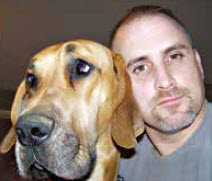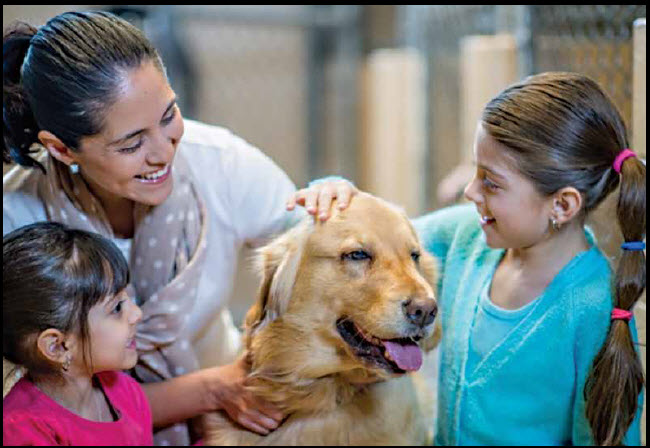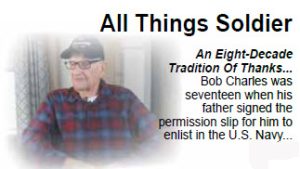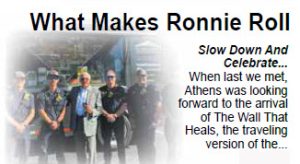 By: Joel Allen
By: Joel Allen
Hello, folks! Well it seems like this month has been nothing but new additions here and there for families. I mean for the “hoomans” too…LOL. Just the other day, I was at a friend’s house assisting in the introduction of a Great Dane puppy named Annie to her new family and their canine family member. It went off without a hitch, as they would say.
Now to those out there who are thinking about getting a new addition to their family pack, let me impart a little advice. Whether it is a puppy or full adult dog and the family getting the dog already has one or more dogs, I always suggest a meet-and-greet between the dogs. And I always suggest neutral territory. Neutral territory is any area that neither dog has ever claimed domain over. This makes them focus better on each other and reduces the stress on the new dog.
All right, we’re in neutral territory and both parties are getting ready to do the meet-and-greet, what’s the first thing we all do before bringing the dogs out to meet? I like to think that everyone has already discussed the “what ifs” and prepared a game plan should anything go wrong.
Now we bring the dogs to one another to meet. Sometimes when we are doing this, I will change the dynamics by switching the people bringing the dogs out to someone the dogs know but are not used to having hold their leashes, and I let them take this in. It’s a diversion tactic I have used and found to be effective because now both dogs are like, “Wait a minute, that’s not my favorite hooman holding my leash.” It is a Jedi trick that proves to work at times. So, let’s say this meet-and-greet goes well for the first initial meet. We then move into familiar territory of one or the other dog’s original place. Here we are looking and seeing what body language might take place. After we, the hoomans, have watched and discussed different subjects as we allow the pups a chance to get to know each other, we send the new addition to the family home.
 What if there are several dogs needing to be introduced to the new addition? Here is my recommendation. First, we start with the pack leader in the dog world. Then after that, and there are no issues, we move to the second in command of the dogs. We go down the line until they all have been introduced. Once the leader accepts, most of the time the others will fall in line.
What if there are several dogs needing to be introduced to the new addition? Here is my recommendation. First, we start with the pack leader in the dog world. Then after that, and there are no issues, we move to the second in command of the dogs. We go down the line until they all have been introduced. Once the leader accepts, most of the time the others will fall in line.
Have I seen things go south quickly between two dogs with one rejecting the other? Yes, in fact it happened not too long ago when we were trying to introduce a Great Dane puppy to an adult Great Dane, and the big boy tried to eat the puppy. We tried to introduce them again thinking it was a misunderstanding, but the big boy was not having it. Sometimes these things don’t work out because some dogs just will not share their family.
In these cases where there might be trouble, I always tell the parties involved that we cannot have anxiety, or the dogs might get nervous because they feel our energy. I recommend that all dogs are leashed, and the body language I watch for during the meet-and-greet are how the dogs look at one another, if their tails are wagging, what position are their tails in, whether their ears are forward or backwards, if their chest is poked out, if their hackles are up, and what stance their entire body holds at the time of their initial meeting. If either dog shows any signs of aggression and we cannot get them to accept the other dog, we end the session and move on.
As I have said before, the hoomans need to be relaxed as much as possible. Try not to worry about the “what ifs” because if the thought is there your dog could pick up on that and make them nervous. Your body language and position are keys to success or failure also. If your dog is obsessed with their hooman and they will not share, then that is going to be a problem. When conducting a meet-and-greet, try to never allow your dog to stand between you and the new family member. This can become a defense posture. So we want to encourage your dog to be by your side, if anywhere. If your dog pulls forward toward the dog though, just take it easy and hold on to the leash. Watch and listen because sometimes there is a warning growl or that calm-before-the-storm feeling right before the stuffing hits the fan. If that feeling is there, immediately remove the dogs to safety. Then attempt the meet-and-greet again at a later time. Sometimes, walking the dogs together de-escalates the entire situation.
Lastly, I would recommend having muzzles on hand if things seem really rough at first. And remember, sometimes your dogs will say “NO,” no matter how you slice it. I hope August is wonderful to everyone. Also, I am still working on that Program of Instruction (POI) for the free dog training for the Kids with Cancer. I am really going to push to get in with St Jude’s, if the Lord is willing.
By: Joel Allen






